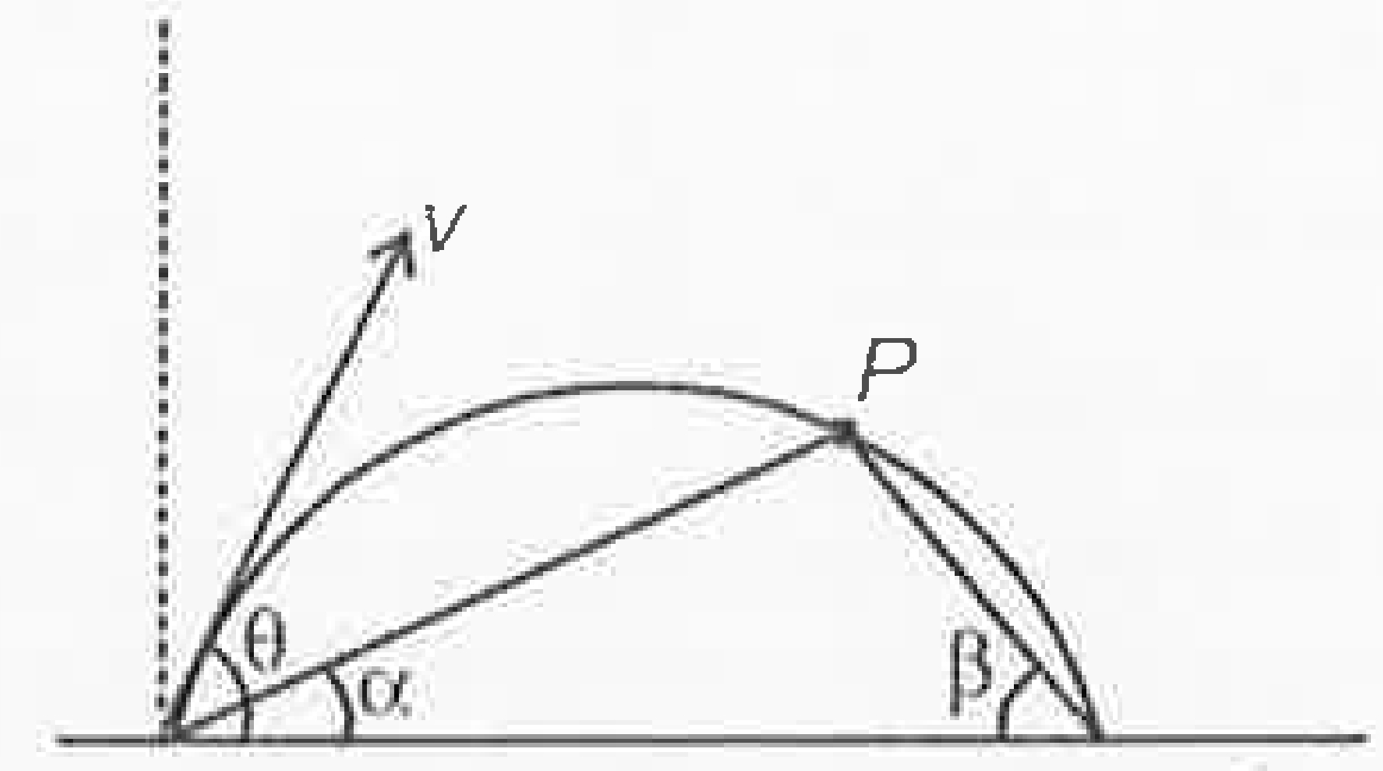Galileo writes that for angles of projection of a projectile at angles (45+θ) and (45−θ), the horizontal ranges described by the projectile are in the ratio of (if θ≤45)
2:1
1:2
1:1
2:3
The correct Answer is:C
To solve the problem, we need to find the ratio of the horizontal ranges of a projectile launched at angles (45+θ) and (45−θ).
1. Identify the Angles of Projection:
- Let the first angle of projection be θ1=45+θ.
- Let the second angle of projection be θ2=45−θ.
2. Use the Range Formula:
- The range R of a projectile is given by the formula:
R=u2sin(2θ)g
where u is the initial velocity, g is the acceleration due to gravity, and θ is the angle of projection.
3. Calculate the Range for the First Angle:
- For θ1=45+θ:
R1=u2sin(2(45+θ))g
- Simplifying sin(2(45+θ)):
sin(2(45+θ))=sin(90+2θ)=cos(2θ)
- Therefore, the range R1 becomes:
R1=u2cos(2θ)g
4. Calculate the Range for the Second Angle:
- For θ2=45−θ:
R2=u2sin(2(45−θ))g
- Simplifying sin(2(45−θ)):
sin(2(45−θ))=sin(90−2θ)=cos(2θ)
- Therefore, the range R2 becomes:
R2=u2cos(2θ)g
5. Find the Ratio of the Ranges:
- Now, we find the ratio R1R2:
R1R2=u2cos(2θ)gu2cos(2θ)g=1
6. Conclusion:
- The ratio of the horizontal ranges R1 and R2 is 1:1.
Final Answer:
The ratio of the horizontal ranges described by the projectile at angles (45+θ) and (45−θ) is 1:1.
- Let the first angle of projection be θ1=45+θ.
- Let the second angle of projection be θ2=45−θ.
- The range R of a projectile is given by the formula:
R=u2sin(2θ)g
where u is the initial velocity, g is the acceleration due to gravity, and θ is the angle of projection.
- For θ1=45+θ:
R1=u2sin(2(45+θ))g
- Simplifying sin(2(45+θ)):
sin(2(45+θ))=sin(90+2θ)=cos(2θ)
- Therefore, the range R1 becomes:
R1=u2cos(2θ)g
- For θ2=45−θ:
R2=u2sin(2(45−θ))g
- Simplifying sin(2(45−θ)):
sin(2(45−θ))=sin(90−2θ)=cos(2θ)
- Therefore, the range R2 becomes:
R2=u2cos(2θ)g
- Now, we find the ratio R1R2:
R1R2=u2cos(2θ)gu2cos(2θ)g=1
- The ratio of the horizontal ranges R1 and R2 is 1:1.
The ratio of the horizontal ranges described by the projectile at angles (45+θ) and (45−θ) is 1:1.
Topper's Solved these Questions
- MOTION IN A PLANE BOOK - NCERT FINGERTPS ENGLISHCHAPTER - MOTION IN A PLANE EXERCISE - HOTS
6 Videos
- MOTION IN A PLANE BOOK - NCERT FINGERTPS ENGLISHCHAPTER - MOTION IN A PLANE EXERCISE - EXEMPLER PROBLEMS
9 Videos
- MECHANICAL PROPERTIES OF SOLIDSBOOK - NCERT FINGERTPS ENGLISHCHAPTER - MECHANICAL PROPERTIES OF SOLIDSEXERCISE - Assertion And Reason
15 Videos
- MOTION IN A STRAIGHT LINEBOOK - NCERT FINGERTPS ENGLISHCHAPTER - MOTION IN A STRAIGHT LINEEXERCISE - NCERT Exemplar
6 Videos
Similar Questions
For angles of projection of a projectile at angle (45∘−θ)and(45∘+θ), the horizontal ranges described by the projectile are in the ratio of :
View SolutionFor angles of projection of a projectile at angle (45∘−θ)and(45∘+θ), the horizontal ranges described by the projectile are in the ratio of :
View Solution
Knowledge Check
Two balls are projected at an angle θ and (90∘−θ) to the horizontal with the same speed. The ratio of their maximum vertical heights is
A1:1Btanθ:1C1:tanθDtan2θ:1
For angles of projection of a projectile at angles (45∘ – θ) and (45∘+θ), the horizontal ranges described by the projectile are in the ratio of:
View SolutionFind the ratio of horizontal range and the height attained by the projectile. i.e. for θ=45∘
View SolutionA projectile is projected with speed u at an angle θ with the horizontal . The average velocity of the projectile between the instants it crosses the same level is
View SolutionAn object is projected at an angle of 45∘ with the horizontal. The horizontal range and the maximum height reached will be in the ratio.
View SolutionAssertion: Horizontal range is same for angle of projection θand(90∘−θ).
Reason : Horizontal range is independent of angle of projection.
View SolutionA point P on the trajectory of a projectile projected at angle with θ with horizontal subtrends angles α and β at the point of landing them

View SolutionKeeping the velocity of projection constant, the angle of projection is increased from 0° to 90°. Then the horizontal range of the projectile
View Solution
